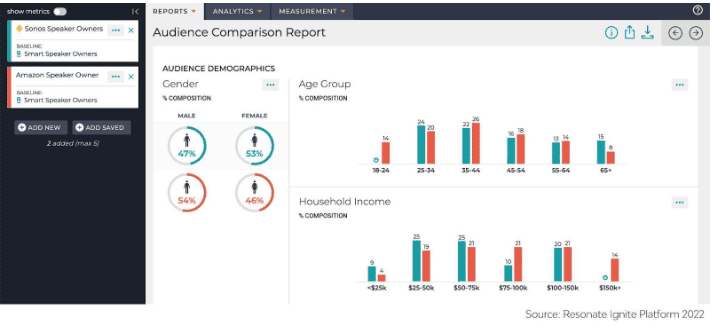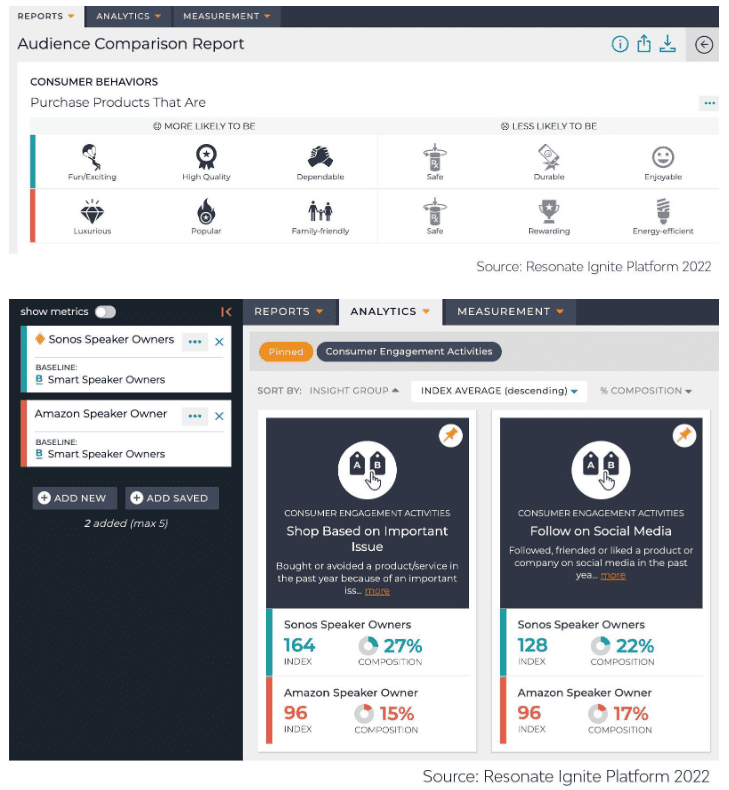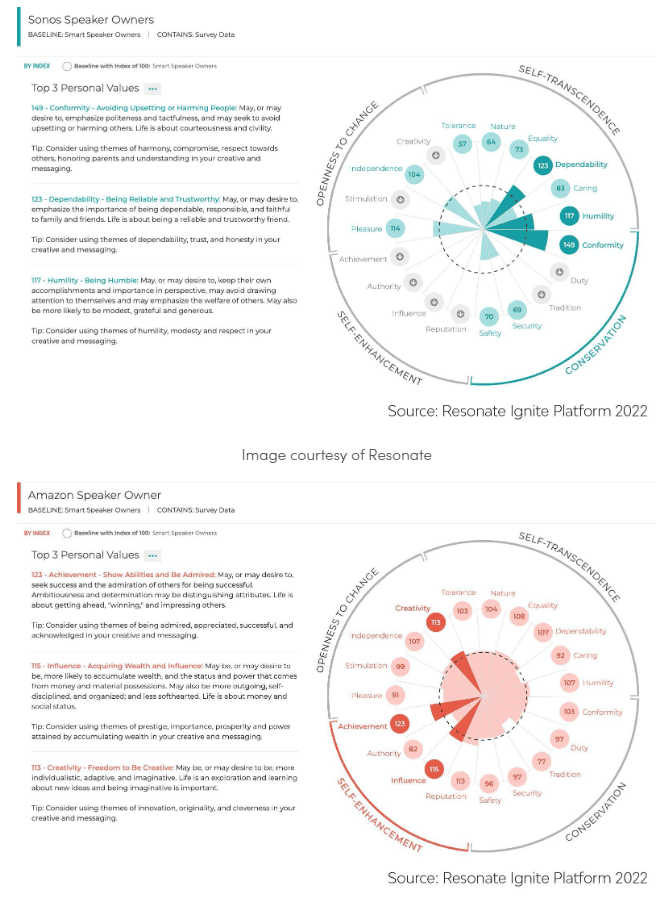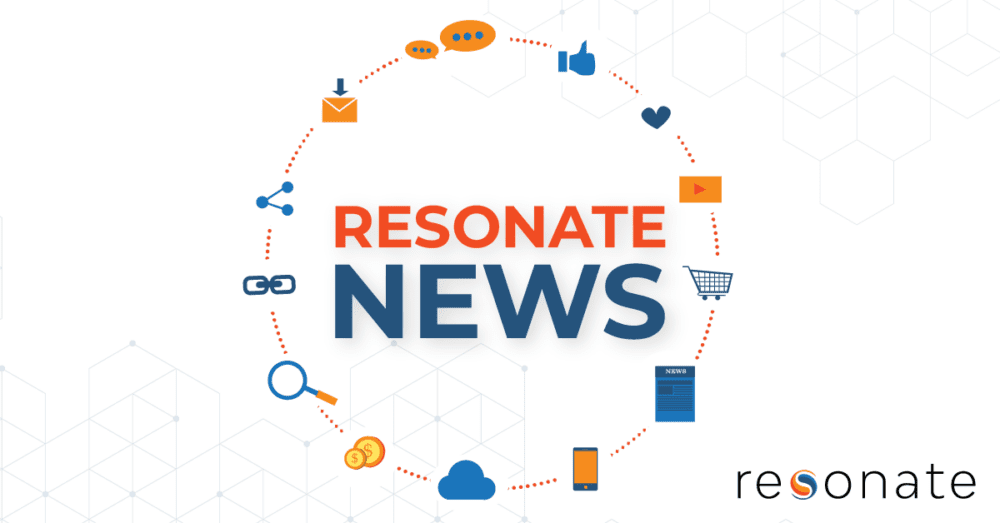The article below appeared in CMO Alliance on November 3, 2022. Read it in its entirety here and download the latest Current Events and Emerging Trends Report.
No one needs to be reminded of how turbulent the past few years have been—and how much more turbulent the world seems to become with each passing day. But for marketers, there’s no ignoring the need to find better ways to understand and connect with customers and prospects in a world where nothing is constant and vague notions about your customers and prospective customers will dismantle even the most compelling campaigns.
Today, more than ever before, consumers are shopping with their hearts and their wallets. They support brands whose values align with their own. Look no further than Goya taking heat for its CEO’s support of Trump or investors who are diverting assets to companies that show long-term ESG (environmental, social, and governance) commitments at record rates. For marketers, the real question then becomes this: How can you proactively align with consumer values and adopt them authentically in your messaging?
Let’s take a look at why personal values are exceptionally reliable drivers of buying decisions today and how marketers can use personal values to deliver messaging that resonates with target audiences, strengthens brand loyalty, and grows revenue.
Bridging the customer-centricity disconnect
Not every brand can (or necessarily should) build a reputation for activism like Ben & Jerry’s, which recently put itself at the forefront of the ongoing push for gun control in the U.S. But that doesn’t mean every brand shouldn’t be putting in the work to align its brand values with its consumers’ personal values.
These days, a tremendous delta exists between marketers’ and consumers’ opinions on how well today’s companies are putting people at the center of their decision-making. While 84 percent of global decision-makers from enterprise-level companies say they “put the customer first,” only 26 percent of U.S. online adults agree that “companies do a good job of understanding me as a person.”
So where’s the disconnect? The answer lies in a deeper understanding of human values. Often, marketing conversations around “values” can feel fuzzy and imprecise, but that doesn’t have to be the case. There are frameworks, including Professor Shalom Schwartz’s Theory of Basic Human Values, that provide concrete, cross-culturally stable ways in which to understand and quantify the values and motivations that underpin people’s attitudes and behaviors. By applying such frameworks, marketers can unlock the consumer understanding—the real human element—that is required to establish deeper connections in a purpose-driven world.
As an example, let’s take a specific human value identified in Schwartz’s framework: authority. Audiences who are characterized by this value—the drive to be in charge and direct people—are more likely to be drawn to marketing messages that are succinct and accentuate results. Themes such as confidence and assertiveness are often applicable for this audience, and marketers might want to consider emphasizing how their products or services can assist a consumer in becoming more socially powerful and influential, and “in control” of a situation. The same translation of values into concrete messaging strategies can be applied across the spectrum of human values, from dependability to creativity.
When things look similar, go deeper
OK, so why are human values so powerful when it comes to honing marketing strategies? Let’s illustrate the point by delving into profiles of customers within a specific product category: smart speakers.
When looking at audience profiles, marketers instinctively think about demographics. And indeed, when you look at the demographics of people who buy Sonos speakers vs. those who buy Amazon speakers, the audiences look fairly similar.

But when audiences look similar, you need to look deeper. For example, when you look at these audiences according to what they look for in a product, we see that Sonos owners want products that are fun and exciting, as well as high quality. Meanwhile, Amazon owners want popular products that are family-friendly, yet luxurious. Furthermore, Sonos owners are far more likely than Amazon speaker owners to shop based on issues that are important to them, and to follow or like brands and products on social media.

Already marketers can start to see how messaging to these audiences can become more targeted. But they shouldn’t stop there. This is where personal values become essential to honing messaging and creative. In this case, when layering on personal values insights, we find that Sonos speaker owners tend to place the most value in conformity, dependability, and humility, while Amazon speaker owners value achievement, influence, and creativity.

By going deeper in this way, marketers are able to get a look at the real human element—that dynamic, holistic 360-degree view of a person that combines core attributes like demographics and psychographics with values and motivations to reveal why people choose, buy, advocate or abandon a brand.
Leveraging AI-powered consumer data that illuminates consumers’ values, and provides a continuously updated view of consumer sentiments, companies are able to craft and deploy marketing programs that resonate—even in a chaotic and turbulent world. In doing so, they can cut through the clutter and successfully reinforce their brands in the minds and hearts (and wallets) of the consumer—in a way that would be difficult for a competitor to duplicate.
Article by Ericka Podesta McCoy – CMO – Resonate

